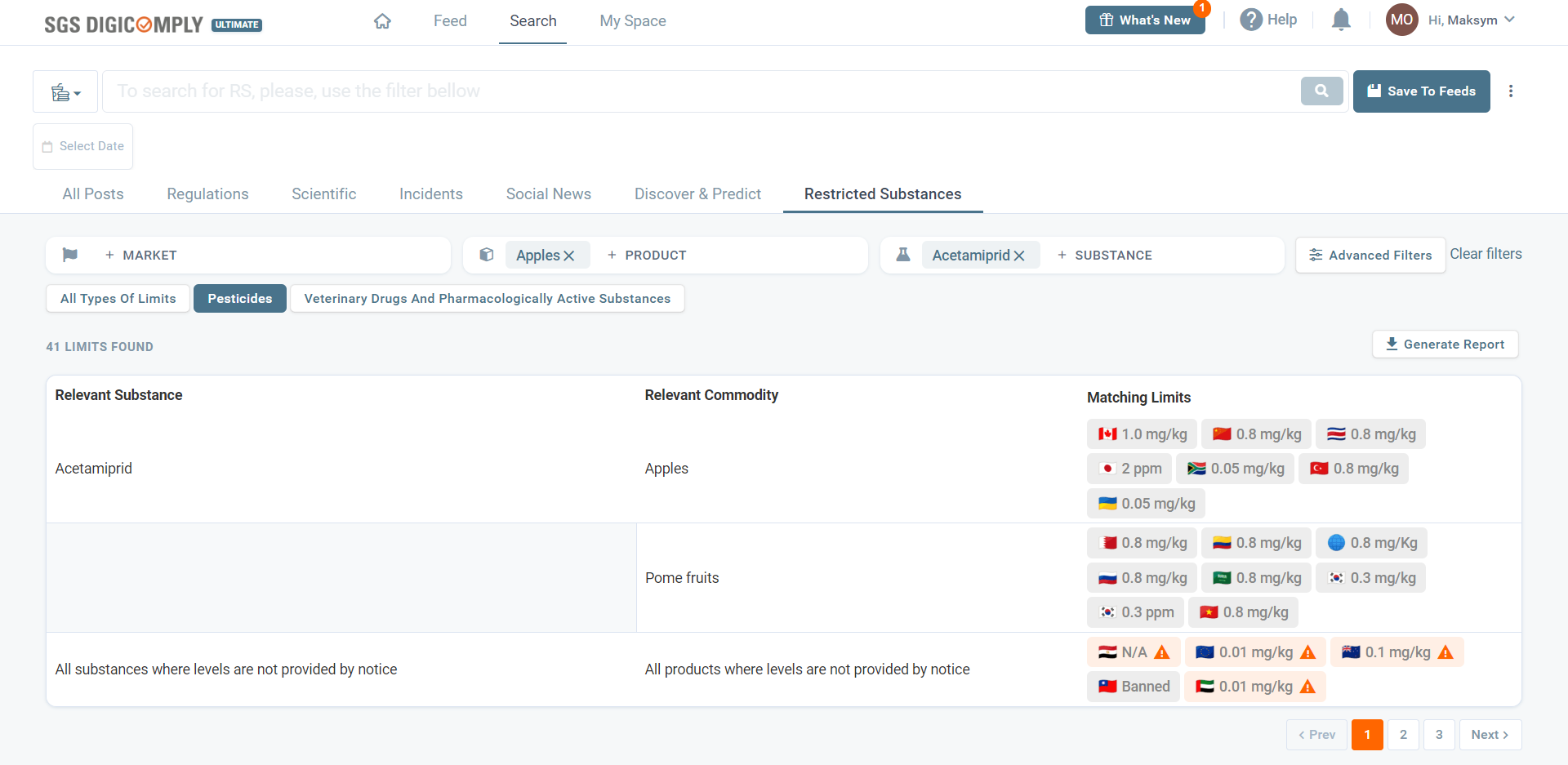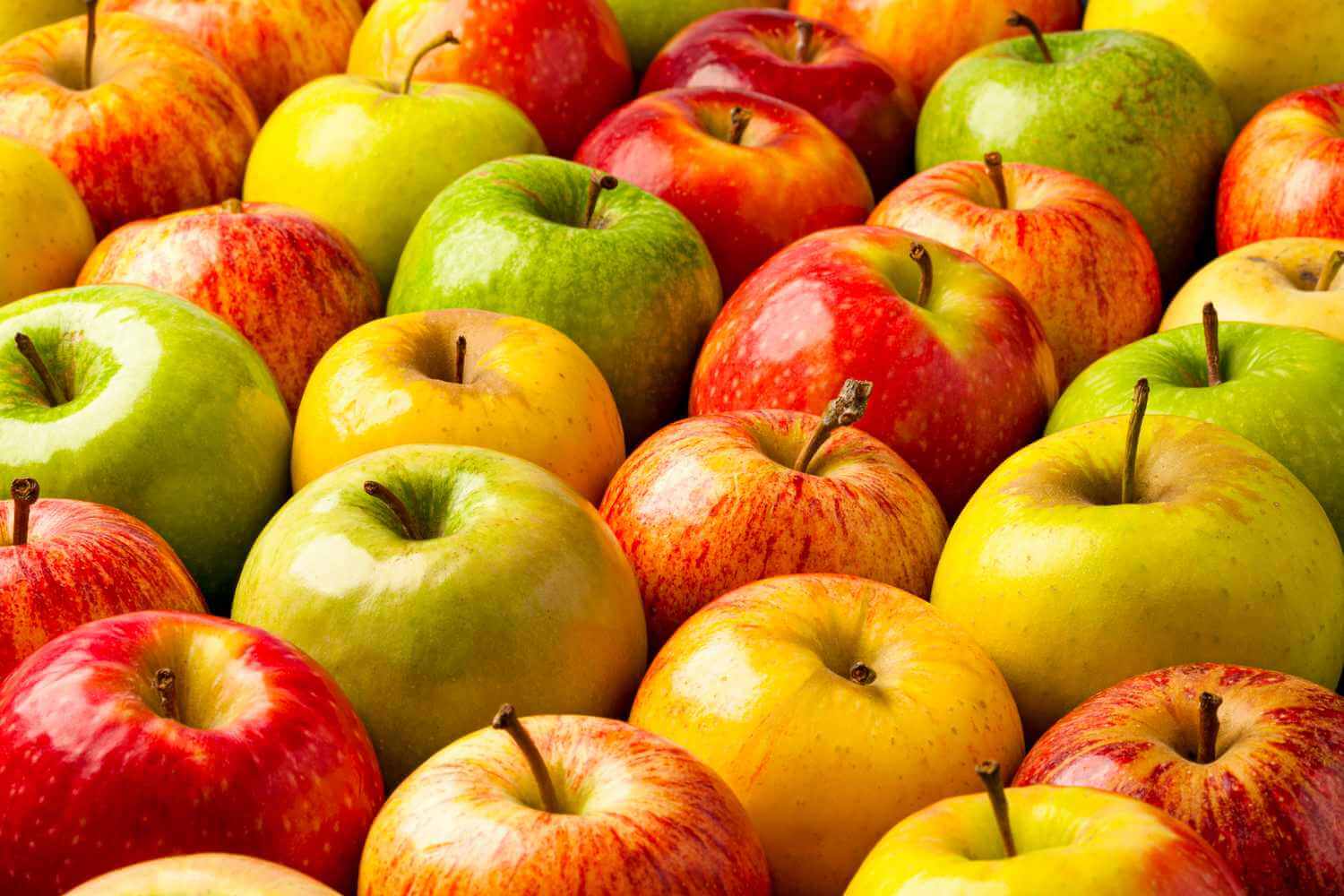Acetamiprid, a neonicotinoid pesticide, is widely used in agriculture to protect crops from a variety of pests. Its application on apples is of particular interest due to the fruit's global consumption and the pesticide's potential impact on human health. This article delves into the risks associated with acetamiprid in apples and explores the safe limits as defined by regulatory bodies worldwide, utilizing data from SGS Digicomply's Restricted Substances module.
Evaluating Risks of Acetamiprid in Apples
Acetamiprid is favored for its effectiveness against a range of pests while being less toxic to mammals compared to other pesticides. However, its widespread use raises concerns about environmental impacts, including potential harm to beneficial insects like bees, and human exposure through the consumption of treated fruits.
Health Implications
While acetamiprid is considered safer for humans than many other pesticides, exposure above certain levels can pose health risks. Acute exposure has been associated with symptoms like headache, nausea, and dizziness, whereas long-term exposure raises concerns about neurotoxic effects, particularly in children and pregnant women.
Environmental Impact
Beyond human health, acetamiprid's impact on non-target species, especially pollinators, is troubling. Although classified as less hazardous to bees, its contribution to the decline in bee populations cannot be ignored, given bees' critical role in ecosystem balance and crop pollination.
Understanding Safe Limits Through SGS Digicomply
To mitigate risks, regulatory bodies have established maximum residue limits (MRLs) for acetamiprid in apples, ensuring consumer safety without compromising the fruit's protective measures against pests. These limits vary globally, reflecting differences in dietary habits, risk assessments, and regulatory frameworks.
Acetamiprid in Apples: Global MRLs Overview
- Brazil and Morocco: MRLs are set at 0.1 mg/kg, indicating strict controls likely reflecting cautious national policies on pesticide residues.
- European Union and Great Britain: Both have harmonized their MRLs at 0.4 mg/kg for acetamiprid, balancing between safety and agricultural needs.
- Japan: Shows the highest tolerance with an MRL of 2 ppm, which may be due to different pest management practices or dietary exposure assessments.
- Canada and Mexico: Both countries have an MRL of 1.0 mg/kg, suggesting a more lenient approach compared to the EU but still within safety margins.
- China, Costa Rica, and Türkiye: These countries have set their limits at 0.8 mg/kg, indicating a moderate stance on acetamiprid residues.
- Australia: With an MRL of 0.2 mg/kg, Australia demonstrates a cautious approach towards pesticide regulation.
- Ukraine, South Africa, and Israel: These countries have some of the strictest limits at 0.05 mg/kg or ppm, highlighting a significant emphasis on minimizing pesticide residues in food.
- United States: The MRL for acetamiprid in the pome fruit group, which includes apples, is set at 1.0 ppm. This limit is in line with the country's regulatory framework to ensure the safety of food while enabling effective pest management.

Feel free to get in touch now to learn about implementing the Global Ingredient Monitoring (Restricted Substances Database) for your company. Or explore the demo and try this tool in action.
Conclusion
The variation in acetamiprid MRLs across different countries underscores the challenge in balancing agricultural needs with health and environmental safety. Regulatory bodies rely on scientific evidence to establish these limits, ensuring that the consumption of apples and other crops does not pose significant health risks to consumers. As research evolves and more data becomes available, these limits may be adjusted to reflect new understandings of risks and safety thresholds. Consumers should remain informed about the origins of their food and the regulations in place to protect their health, while policymakers and regulatory agencies must continuously update their standards to reflect the latest scientific insights.





.webp?width=1644&height=1254&name=Food%20Safety%20Dashboard%201%20(1).webp)
